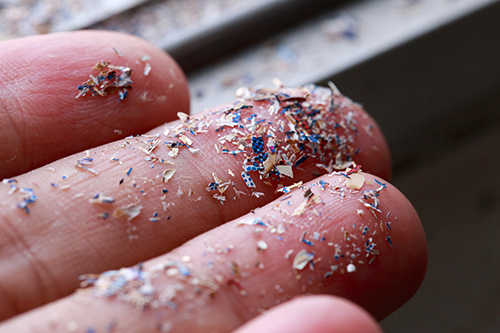Research funded by WRRI shows waters along Bar Harbor, Acadia home to billions of microplastics

Along the shores of Acadia National Park, Bar Harbor and the Schoodic Peninsula are the vast, briny waters of Frenchman Bay. With 98 square miles of water and 39 islands, the bay is vital to shorebirds, fish, lobstermen and outdoor recreationists. University of Maine researchers, however, have discovered that Frenchman Bay and its tributaries are also home to a significant amount of microplastic pollution.
In a new study published in Environmental Engineering Science, researchers reveal there are an estimated 400 billion microplastic fibers on the surface of Frenchman Bay and several connected rivers and estuaries where freshwater from rivers meet salty seawater. The watershed contains an average of 1.8 fibers per liter of water.
“Imagine the 32-ounce water bottle you use every day. If you were to fill your water bottle with water from Frenchman Bay, you would find about two microplastics. Now imagine how many water bottles would fit in the massive volume of Frenchman Bay; that is a lot of microplastics,” said Grace Johnson, lead author and master’s student in civil and environmental engineering.
In addition to Johnson and her advisor Onur Apul, other researchers involved in the project include UMaine graduate students Taylor Bailey, Dilara Hatinoglu and Bea Van Dam; UMaine faculty Lauren Ross and Sean Smith; Ph.D. student Ozioma Nwachukwu and associate professor Kyle Doudrick of Notre Dame; and professor Julie Peller from Valparaiso University.
This research was supported in part by the U.S. Geological Survey through the Maine Water Resources Research Institute.
